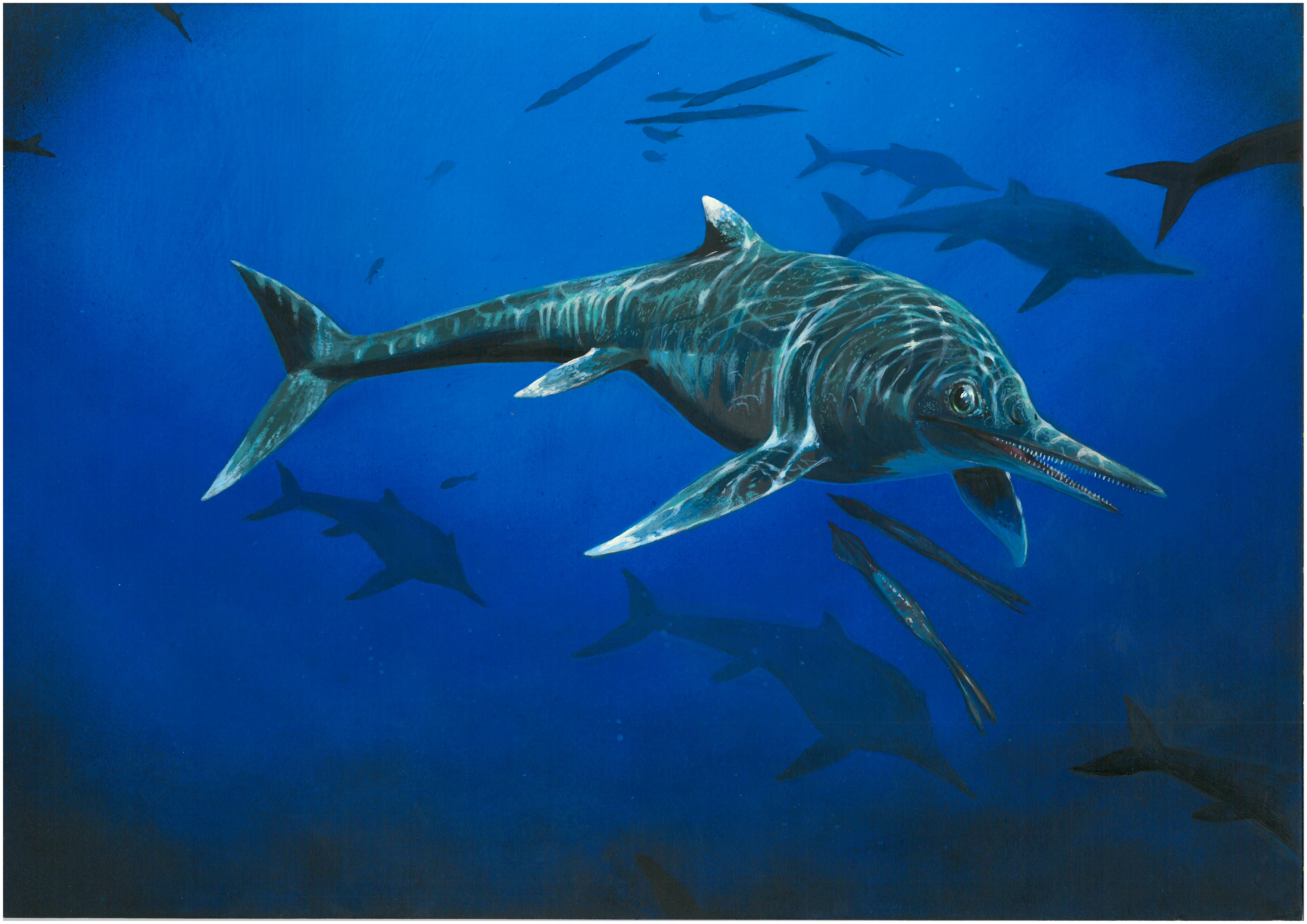
Prehistoric sea reptile lived 200 million years ago
Scientists have identified the remains of a rare 200 million-year-old ichthyosaur sea reptile 22 years after it was first uncovered. The fossil is only the second specimen of an ichthyosaur named Wahlisaurus massarae, a new species discovered by paleontologist Dean Lomax of The University of Manchester.
Ichthyosaurs lived during the time of dinosaurs and traveled by sea. Many of their fossils have been found in the UK, and Lomax has described five different species of ichthyosaurs in recent years.
In 2016, Lomax described an ichthyosaur skeleton from the collections of Leicester’s New Walk Museum and Art Gallery. He had found several unusual features of the bones which he determined were unique and represented a new species. Lomax named the prehistoric reptile Wahlisaurus massarae to honor two of his mentors, Bill Wahl and Professor Judy Massare.
“When Wahlisaurus was announced, I was a little nervous about what other paleontologists would make of it, considering the new species was known only from a single specimen,” said Lomax. “As a scientist you learn to question almost everything, and be as critical as you can be. My analysis suggested it was something new, but some paleontologists questioned this and said it was just ‘variation’ of an existing species.”
For the current study, Lomax teamed up with museum curator and paleontologist Dr. Mark Evans and fossil collector Simon Carpenter. The researchers examined a nearly complete coracoid bone from Carpenter’s collection and discovered that it had the exact same features as that of Wahlisaurus.
“You can only imagine my sheer excitement to find a specimen of Wahlisaurus in Simon’s collection,” said Lomax. “It was such a wonderful moment. When you have just one specimen, ‘variation’ can be called upon, but when you double the number of specimens you have it gives even more credibility to your research.”
The Wahlisaurus fossil dates back 200 million years to a time known as the Triassic-Jurassic boundary, which occurred right after a world-wide mass extinction. This time frame makes it difficult for the experts to determine whether the ichthyosaur was latest Triassic or earliest Jurassic in age.
Carpenter has donated the rare fossil, which was originally uncovered in 1996, to the Bristol Museum and Art Gallery. The study is published in the Geological Journal.
—
By Chrissy Sexton, Earth.com Staff Writer
Image © of James McKay













